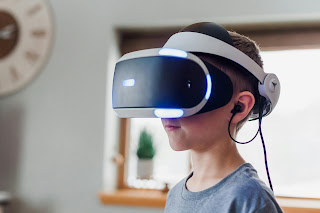Augmented Reality (AR) and Virtual Reality (VR)

Augmented Reality (AR) and Virtual Reality (VR) are immersive technologies that alter our perception of the real world. Here's a brief overview of each: Augmented Reality (AR): AR overlays advanced data onto this present reality climate, upgrading the client's impression of the real world. AR can be experienced through smartphones, tablets, AR glasses, or specialized AR headsets. Applications include gaming, navigation, education, retail, and industrial training. Popular examples of AR include Pokémon GO, Snapchat filters, and navigation apps that superimpose directions onto the real world. Virtual Reality (VR): VR creates a completely artificial, computer-generated environment that immerses the user in a digital world. VR experiences are typically delivered through VR headsets, which cover the user's eyes and ears, blocking out the physical surroundings. VR is widely used in gaming, simulations, virtual travel, and training scenarios (e.g., flight simulators, medical trai...
